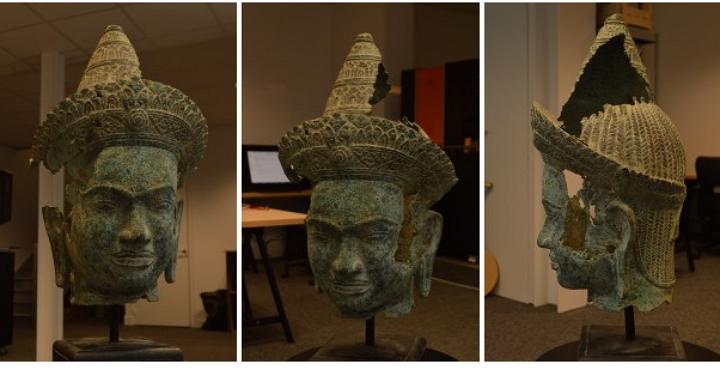There are, for varying reasons, always those willing to attempt to wipe history from memory by destroying artifacts and documents to serve their purposes. Some artifacts are lost to natural disasters and the ravages of time.
To combat the loss of such artifacts, Eric Lemaresquier uses 3D scanning and printing technology expertise to restore such objects and make certain they’re not entirely lost to future generations.
Using photogrammetric scanning, 3D modeling software and 3D printing, Lemaresquier took on the task of accurately repairing and replicating a damaged, ancient bust of Suryavarman, King of Cambodia.
During the 11th century, Suryavarman I was the ultimate leader of the Khmer Empire, and his claim over the Khmer throne derived from his mother’s position as a member of the royal family. His reign stretched for some 40 years and his days were consumed defending his kingdom. He was called the “King of the Just Laws.” Suryavarman I died in 1050 and posthumously achieved the title “the king who has gone to nirvana.”
Intent on preserving the bust of the king, Lemaresquier and his team used a rotating table to capture more than 200 photos to digitally save the sculpture using Autodesk Memento software.
To build the restored physical model in 3D, Lemaresquier used an Mcor IRIS SDL paper-based 3D printer to create an authentic feel in photorealistic color.
“If I had to choose between a plastic replica of Milo’s Venus, and a paper one, the choice would be obvious – paper,” Lemaresquier says of the choice. “Because of the IRIS’ high-resolution color capability, it’s a no brainer. The cost of materials is lower than any other printers out there and the authentic feel and durability for artistic pieces that you get with the Mcor IRIS, you simply can’t get with plastics-based printers.”
The large piece was divided into three parts which were painstakingly assembled after 3D printing, and the finished 3D printed model was coated with a white glue varnish.
The results pleased Lemaresquier, and he believes the project will create new opportunities for the Mcor IRIS process to be employed in historic and artistic restorations, preservation for museums, governments and other organizations.
Mcor technology also came into play recently in preserving a piece of more recent history, as a 3D scanned and printed replica of a brick from the Rana Plaza was created in memory of the 2013 building collapse disaster.
Do you know of any other projects where 3D printing is being used to preserve and repair objects of antiquity? Let us know in the 3D Printed Bust of Cambodian King forum thread on 3DPB.com.
